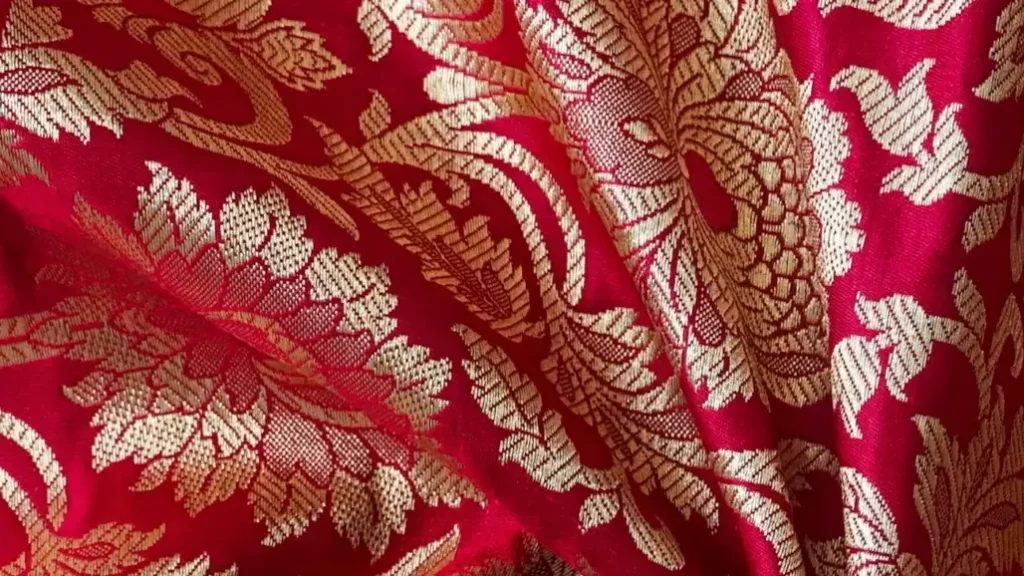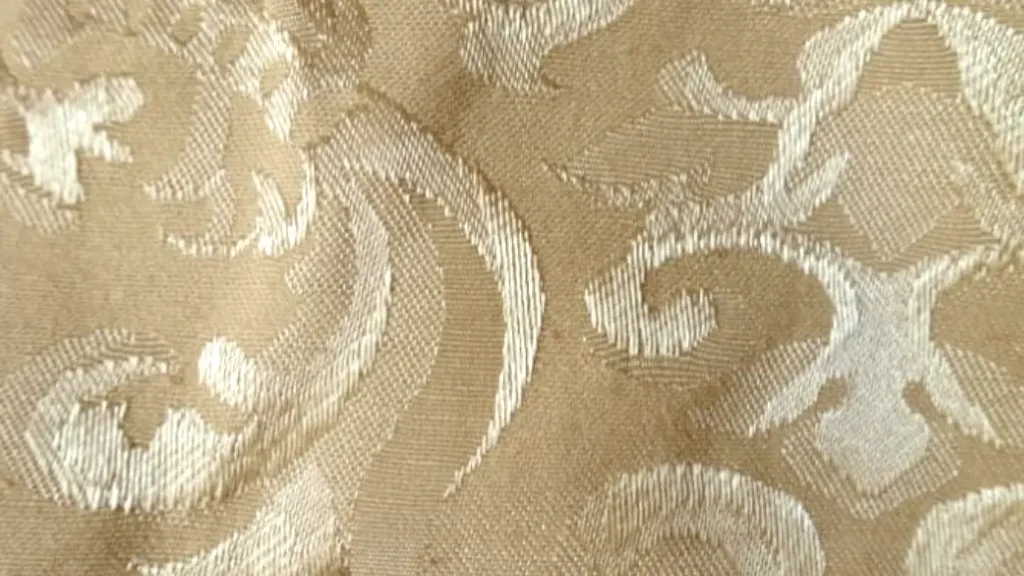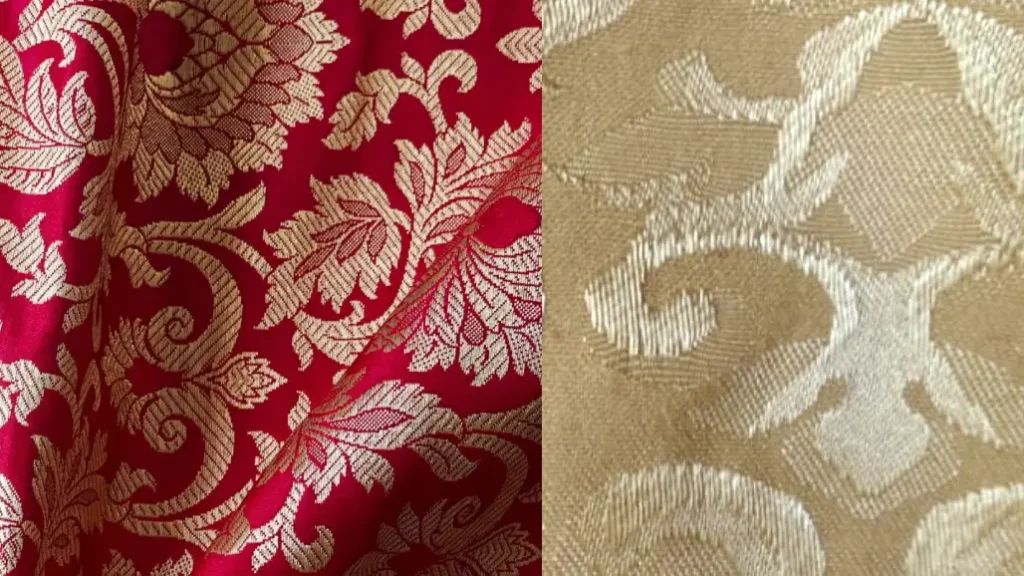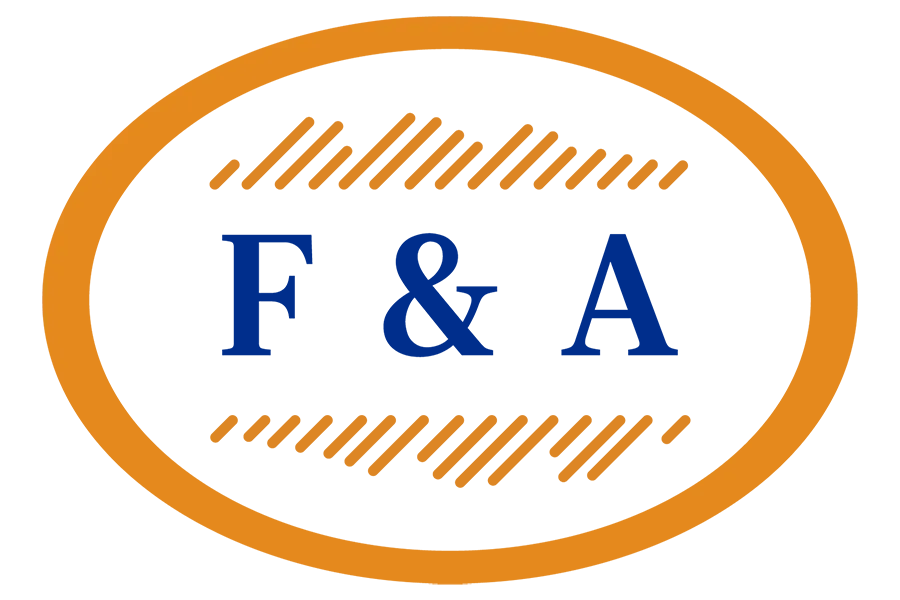Brocade and Jacquard are both renowned for their intricate designs and luxurious feel, often leaving people wondering about their key differences. While both involve advanced weaving techniques, they differ significantly in their creation and final appearance. Brocade, typically made from silk, employs supplementary weft threads to create raised patterns, resulting in a rich, textured surface. Jacquard, on the other hand, utilizes a complex system of punched cards or computer software to weave intricate designs directly into the fabric, offering greater versatility in pattern complexity and color combinations.
This blog post will delve deeper into the unique characteristics of Brocade and Jacquard fabrics, exploring their weaving methods, design possibilities, and common applications. By understanding their distinct features, you can make informed decisions when choosing the right fabric for your next project, whether it’s a fashion garment, home decor item, or a piece of art.
What Is Brocade Fabric

Brocade is a luxurious and richly decorative fabric known for its intricate patterns and raised designs. It’s created through a special weaving technique that involves interlacing additional threads into the base fabric, resulting in an embossed or embroidered-like effect. These supplementary threads create the elaborate patterns that characterize brocade, adding depth and dimension to the textile.
Traditionally, brocade was woven with silk and often included metallic threads like gold or silver, further enhancing its opulent appearance. While silk remains a popular choice, modern brocades can also be made from other fibers such as cotton, rayon, or synthetic blends.
What Is Jacquard Fabric

Jacquard is a versatile fabric known for its intricate and complex patterns woven into the fabric structure. Unlike brocade, which uses supplementary threads to create raised designs, Jacquard achieves its intricate patterns through a special weaving technique that utilizes a system of interconnected threads and heddles. This allows for the creation of highly detailed and intricate designs, including large-scale motifs, realistic images, and even photographs.
The Jacquard technique offers immense flexibility in terms of pattern complexity and color variations. It can be used to create a wide range of fabrics, from simple geometric patterns to elaborate floral designs and intricate tapestries. Jacquard fabrics are widely used in various applications, including upholstery, curtains, fashion, and home decor.
Brocade vs Jacquard Fabric

Both Brocade and Jacquard are renowned for their intricate patterns and luxurious feel, but they differ significantly in their construction and aesthetic.
Brocade Fabric
Weaving Technique:
- Utilizes supplementary weft threads that are woven over and under the base fabric, creating raised, embossed patterns.
- Often incorporates metallic threads (gold, silver) for added opulence.
Appearance:
- Characterized by raised, three-dimensional patterns.
- Luxurious and opulent with a rich, textured surface.
- Often features floral, damask, or geometric motifs.
Common Uses:
- Formalwear (evening gowns, wedding dresses)
- Upholstery (high-end furniture)
- Decorative items (pillows, curtains)
- Traditional attire and ceremonial garments
Jacquard Fabric
Weaving Technique:
- Employs a specialized loom that controls individual warp threads, allowing for intricate patterns to be woven directly into the fabric structure.
Appearance:
- Features woven patterns that are flush with the surface of the fabric.
- Can achieve a wide range of patterns, from simple geometric designs to complex photographic images.
- Offers a more versatile aesthetic compared to brocade.
Common Uses:
- Upholstery (furniture, curtains)
- Fashion (dresses, suits, accessories)
- Home decor (tapestries, wall hangings)
- Industrial applications (car interiors, luggage)
Key Differences between jacquard vs brocade fabric in the following
| Feature | Brocade | Jacquard |
|---|---|---|
| Weaving Technique | Supplementary weft threads for raised patterns | Specialized loom for intricate woven designs |
| Pattern Appearance | Raised, embossed | Flush with the surface |
| Texture | Rich, textured, three-dimensional | Smooth or slightly textured depending on the design |
| Versatility | More limited in pattern complexity | Highly versatile, can achieve intricate and complex designs |
| Common Uses | Formalwear, upholstery, decorative items | Upholstery, fashion, home decor, industrial applications |
| Typical Price Point | Generally more expensive | Can range from affordable to high-end depending on the complexity and materials |
Both Brocade and Jacquard offer unique aesthetic qualities and find applications in various industries. Brocade, with its opulent and luxurious feel, is often chosen for special occasions and high-end applications. Jacquard, with its versatility and adaptability, finds broader use in fashion, home decor, and industrial settings.
How to Choose Brocade and Jacquard Fabric
Choosing between Brocade and Jacquard often comes down to the desired aesthetic and intended use.
- For a luxurious and opulent look: Brocade is the ideal choice. Its raised patterns and potential for metallic threads create a truly regal and eye-catching effect. Consider it for formalwear, such as evening gowns or wedding dresses, or for high-end upholstery on statement furniture pieces.
- For a more versatile and adaptable option: Jacquard offers greater flexibility. Its intricate woven patterns can range from subtle to bold, making it suitable for a wider array of applications. Jacquard can be found in everything from everyday clothing to sophisticated curtains and upholstery.
- Consider the desired level of formality: Brocade, with its dramatic texture and often bold patterns, tends to be more formal. Jacquard, depending on the design, can range from formal to casual, making it suitable for a wider range of occasions and settings.
- Think about the overall design and style: If you’re aiming for a classic and timeless look, Brocade might be the perfect choice. If you prefer a more contemporary or eclectic style, Jacquard’s versatility allows for greater creative freedom in pattern and color selection.
Ultimately, the best way to choose between Brocade and Jacquard is to carefully consider the specific project, the desired aesthetic, and the intended use of the fabric.
Conclusion
In conclusion, both Brocade and Jacquard fabrics are luxurious and intricate textiles with distinct characteristics. Brocade, with its raised designs and opulent appearance, is often used for formalwear and decorative items. Jacquard, known for its versatility and intricate patterns, finds applications in a wide range of products from upholstery to fashion. Understanding their differences can help you choose the perfect fabric for your specific needs.
Ready to elevate your next project with high-quality fabrics? Explore our extensive collection of wholesale fabrics at Fanda Fabrics. We offer a wide range of options, including both Brocade and Jacquard, to suit your every need.
